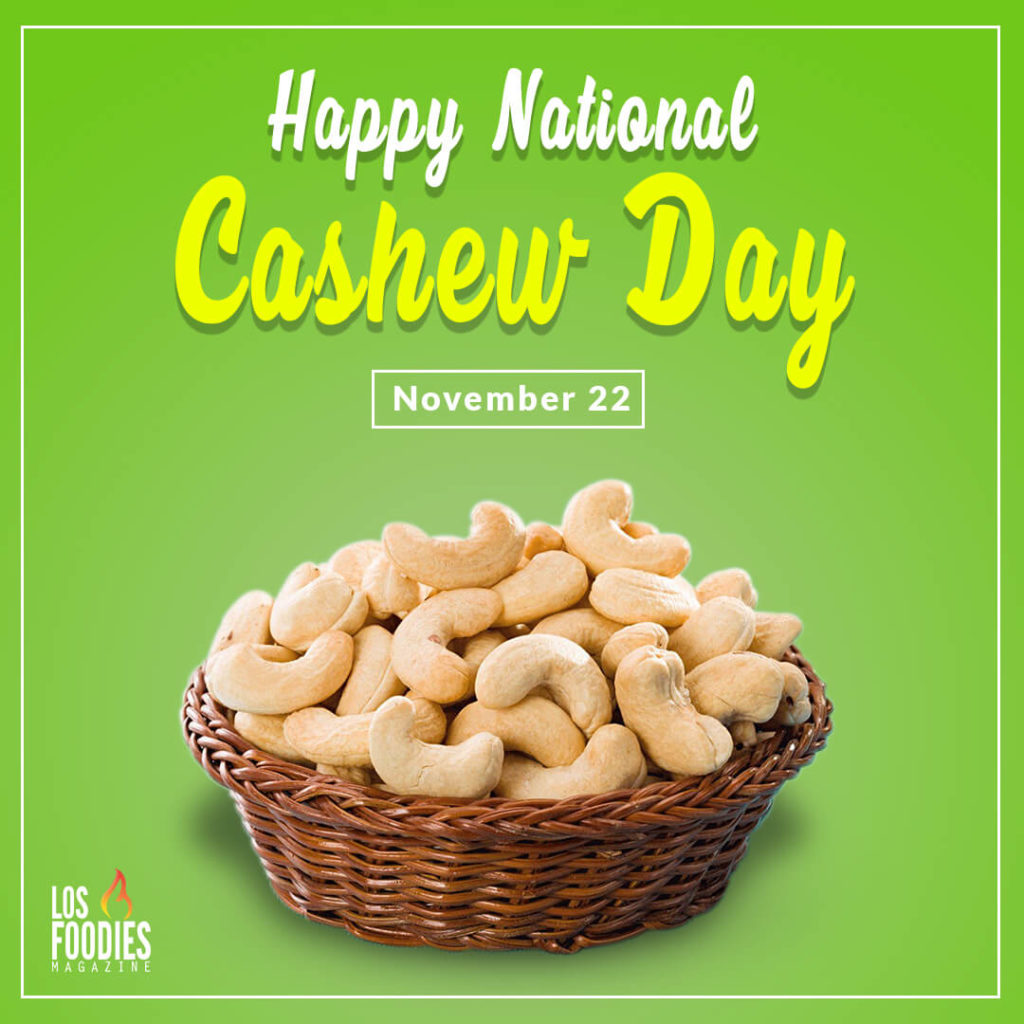Cashews are a kind of fruit known as a pseudo-fruit. They are produced by the cashew apple, which is bitten off and falls to the ground when it is fully ripe. This fruit has a leathery rind and grows in clusters on the end of branches. It ripens throughout the year, even during periods of drought or heat and can fall at any time. Originally from South America, the cashew tree was grown in India for centuries before it was brought to Africa as a replacement for pistachios and almonds. Today, most cashew trees grow in Brazil.
The cashew nut is a fruit of the cashew apple and is harvested when the apple becomes ripe. The cashew apple can be processed further into other forms of foods to create dishes like cashew wine, sweets and snacks. They are produced commercially in the tropics because they grow on large trees that need lots of sunshine.

Celebrate National Cashew Day nuts are oval-shaped fruit that grows inside the hard inner shell of the cashew apple. The nut itself is covered by a second shell that is tan in colour and hard to crack, housing a sweet and extremely nutritious kernel. It belongs to the own circle of relatives of Anacardiaceae and is an exceptional supply of Vitamins and minerals. About 10% of their weight is starch which makes them useful in condensing water-based dishes such as Indian milk-based desserts, stew, and soups. Its uncommon function makes them beneficial for diverse South Asian cuisines as well. Cashews also are utilised in complete bureaucracy in Thai and Chinese cuisine. Roasted and salted cashews popularly called kacang mete is a famous snack of Indonesia.
Cashews grow on trees inside hard outer shells that can be opened by burning the shell or using a special tool. Once the shell is opened, the cashew comes out of its shell. Cashews come in various colours and can be found in a raw, roasted or salted form. Cashews are maximum typically utilised in Indian and Pakistani dishes which include sweets, curries and are extensively utilised in garnishing. In the 21st century, African countries increased cashew cultivation to produce cashew milk which became an alternative for dairy milk. In Brazil, cashew fruit juice and pulp are used in the making of sweets.
The cashew apple or fruit of the cashew tree is loved for its juiciness and tart flavour. The skin of the fruit has a smooth skin and an edible pulp with a slightly yellowish colour that tastes similar to apple jelly. It is not commonly eaten raw, but it can be made into jellies, marmalade or even wine.
The next time you eat cashew remember to celebrate National Cashew Day, popularly known as Cashew Nut Day. Let us know how important the cashew nut is to you and how it has impacted your life.

The Los Foodies Magazine content team is dedicated to showcasing New Mexico’s food culture through stories, recipes, events, and local business features. They create engaging content that connects readers with the chefs, restaurants, and flavors that define the community.
View all posts Los Foodies Magazine Content Team